
Aurangabad: The City of Gates and Mughal Splendor
Aurangabad, known as the 'City of Gates,' is a treasure trove of Mughal architecture, ancient caves, and vibrant local markets, making it a must-visit destination in India.
Aurangabad, often referred to as the 'City of Gates,' offers a fascinating blend of ancient history and Mughal architecture. The city is a gateway to the World Heritage Sites of Ajanta and Ellora Caves, which are renowned for their stunning rock-cut architecture and intricate carvings. These ancient caves, dating back to between the 2nd century BCE and 6th century CE, are a must-see for history enthusiasts and art lovers alike. Within the city, you'll find the Bibi Ka Maqbara, often called the 'Taj of the Deccan.' This mausoleum, built by Aurangzeb in memory of his wife, is a fine example of Mughal architecture. The city's numerous gates, such as Paithan Gate and Delhi Gate, add to its historical charm, each telling its own story of the city's storied past. Aurangabad is also known for its vibrant local markets, where you can shop for traditional Himroo shawls, Paithani sarees, and more. The city's cuisine is a delectable mix of Mughlai and Hyderabadi influences, offering dishes that will tantalize your taste buds. Whether you're exploring ancient caves or savoring local delicacies, Aurangabad promises a rich and memorable experience.
Local tips in Aurangabad
- Visit the Ajanta and Ellora Caves early in the morning to avoid crowds and heat.
- Hire a local guide at the Bibi Ka Maqbara for insightful historical details.
- Try the local dish, Naan Qalia, a traditional meat curry, at one of the city's famous eateries.
- Shop for Himroo shawls and Paithani sarees at the local markets for authentic souvenirs.
- Carry a water bottle and wear comfortable shoes as the terrain can be uneven at historical sites.
Neighbourhoods in Aurangabad
Aurangabad: The City of Gates and Mughal Splendor
Aurangabad, often referred to as the 'City of Gates,' offers a fascinating blend of ancient history and Mughal architecture. The city is a gateway to the World Heritage Sites of Ajanta and Ellora Caves, which are renowned for their stunning rock-cut architecture and intricate carvings. These ancient caves, dating back to between the 2nd century BCE and 6th century CE, are a must-see for history enthusiasts and art lovers alike. Within the city, you'll find the Bibi Ka Maqbara, often called the 'Taj of the Deccan.' This mausoleum, built by Aurangzeb in memory of his wife, is a fine example of Mughal architecture. The city's numerous gates, such as Paithan Gate and Delhi Gate, add to its historical charm, each telling its own story of the city's storied past. Aurangabad is also known for its vibrant local markets, where you can shop for traditional Himroo shawls, Paithani sarees, and more. The city's cuisine is a delectable mix of Mughlai and Hyderabadi influences, offering dishes that will tantalize your taste buds. Whether you're exploring ancient caves or savoring local delicacies, Aurangabad promises a rich and memorable experience.
When is the best time to go to Aurangabad?
Iconic landmarks you can’t miss
BIBI KA MAQBARA
Explore Bibi Ka Maqbara, a stunning Mughal mausoleum in Maharashtra, often called the 'Taj of the Deccan' for its exquisite beauty and architectural elegance.
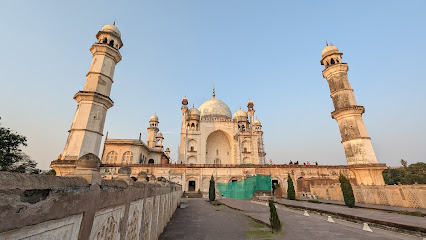
Daulatabad Fort
Explore the breathtaking Daulatabad Fort, a historical gem in Maharashtra, with stunning architecture and panoramic views steeped in rich Indian heritage.

Siddharth Garden and Zoo
Discover the enchanting Siddharth Garden and Zoo in Aurangabad, where lush landscapes meet captivating wildlife for an unforgettable experience.

Cannought Garden
Discover the lush tranquility of Cannought Garden in Aurangabad - a serene park perfect for relaxation and exploration amidst nature's beauty.

Himayatbagh Biodiversity Heritage site
Explore the lush greenery and historical charm of Himayatbagh Biodiversity Heritage Site in Aurangabad, a perfect retreat for nature lovers and history enthusiasts.

Aurangabad Caves Aurangabad
Discover the ancient Aurangabad Caves, a UNESCO World Heritage site featuring exquisite rock-cut Buddhist sculptures and stunning architecture.

Delhi Gate
Explore Delhi Gate in Aurangabad, a majestic historical landmark that showcases exquisite Mughal architecture and rich cultural heritage.

Makai Gate
Discover the majestic Makai Gate in Aurangabad - a historical landmark showcasing the exquisite Mughal architecture and rich cultural heritage.

Goga Baba Hill
Experience breathtaking views and serene trekking at Goga Baba Hill, a top tourist attraction in Aurangabad, Maharashtra.

Soneri Mahal
Explore Soneri Mahal, Aurangabad’s stunning historical monument blending rich heritage with architectural beauty, perfect for culture enthusiasts and photographers.

Panchakki
Explore Panchakki, a historic site in Aurangabad showcasing remarkable architecture, serene gardens, and ancient engineering marvels.

Chhatrapati Shivaji Maharaj Museum, Sambhajinagar
Discover the legacy of Shivaji Maharaj at Chhatrapati Shivaji Maharaj Museum, a cultural gem in Aurangabad, showcasing history, art, and artifacts.

Punyashlok Ahilyabai Holkar Square Aurangabad
Explore the historical Punyashlok Ahilyabai Holkar Square in Aurangabad, a vibrant tribute to Maratha heritage and local culture.

Chand Minar
Explore the grandeur of Chand Minar in Daulatabad, Maharashtra, a stunning historical landmark showcasing the artistry of the Bahmani dynasty.

Jafar Gate
Experience the rich heritage of Maharashtra at Jafar Gate, a historical landmark in Aurangabad, blending culture, architecture, and local vibrancy.

Unmissable attractions to see
Ellora Caves
Explore the Ellora Caves: A UNESCO World Heritage Site with stunning rock-cut temples and rich cultural history in Maharashtra, India.

BIBI KA MAQBARA
Explore Bibi Ka Maqbara, a stunning mausoleum in Maharashtra, reflecting Mughal architecture and a rich history of love and loss.

Aurangabad Railway Station
Discover the vibrant heritage of Aurangabad at its bustling railway station, your gateway to historical treasures and local flavors.

Siddharth Garden and Zoo, Chatrapati Sambhaji Nagar
Experience the harmony of nature and wildlife at Siddharth Garden and Zoo, a serene escape in Chatrapati Sambhaji Nagar, Maharashtra.

Shri Ghrishneshwar Jyotirlinga Temple
Discover the spiritual essence of India at Shri Ghrishneshwar Jyotirlinga Temple in Ellora, a masterpiece of architecture and devotion.
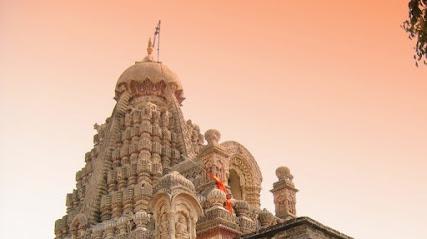
Cannought Garden
Explore the natural beauty and tranquility of Cannought Garden in Aurangabad, a perfect retreat for nature lovers and families alike.

Aurangabad Caves
Explore the ancient Aurangabad Caves, a UNESCO World Heritage Site showcasing exquisite rock-cut Buddhist monuments and stunning sculptures in Maharashtra.
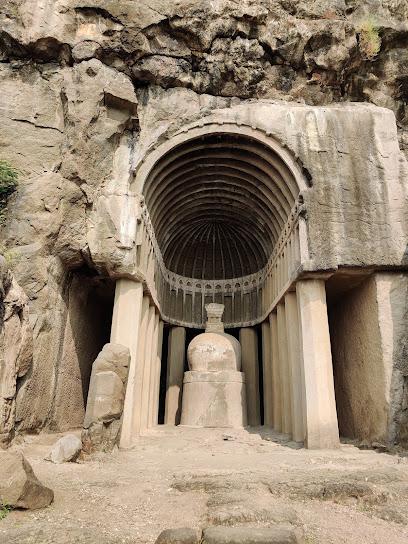
Himayatbagh Biodiversity Heritage site
Explore the serene Himayatbagh Biodiversity Heritage Site in Aurangabad, where nature's beauty and biodiversity await your discovery.

Makai Gate
Explore Makai Gate in Aurangabad, a stunning historical landmark showcasing the beauty of Mughal architecture and rich cultural heritage.

Jama Masjid Aurangabad
Discover the stunning Mughal architecture of Jama Masjid Aurangabad, a serene oasis in Chhatrapati Sambhaji Nagar that embodies rich cultural heritage.

Soneri Mahal
Discover the historical marvel of Soneri Mahal in Aurangabad, a stunning representation of Mughal architecture and serene beauty amidst lush gardens.

Shri Khandoba Temple, Sambhajinagar
Experience the spiritual tranquility and architectural beauty of Shri Khandoba Temple, a must-visit Hindu shrine in Sambhajinagar, Maharashtra.

Shahganj Masjid
Discover the architectural beauty and serene atmosphere of Shahganj Masjid in Aurangabad, a must-visit tourist attraction celebrating rich cultural heritage.
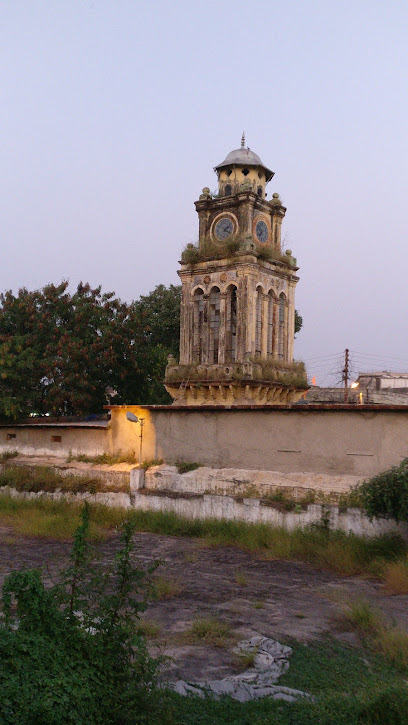
Encore Creative Events
Explore Encore Creative Events, a beautiful Hindu temple in Aurangabad, Maharashtra, blending spirituality, art, and local culture for an enriching travel experience.

Salim Ali Park
Explore Salim Ali Park: A serene escape in Aurangabad with lush greenery, a tranquil lake, and abundant birdwatching opportunities.

Essential places to dine
Green Leaf Vegetarian Cuisine
Discover the vibrant flavors of vegetarian cuisine at Green Leaf Vegetarian Cuisine in Aurangabad – where Indian meets Chinese in every delicious bite.

Indiana's Red Velvet Veg Restaurant
Discover the vibrant vegetarian flavors at Indiana's Red Velvet Veg Restaurant in Aurangabad – where every dish is a celebration of taste.

Indiana Veg Restaurant and Cake Boutique
Explore the delightful flavors of vegetarian cuisine at Indiana Veg Restaurant and Cake Boutique in Aurangabad - a must-visit dining experience.

Shahi Bhoj Thali Restaurant
Discover the rich flavors of authentic Indian vegetarian cuisine at Shahi Bhoj Thali Restaurant in Aurangabad.

Great Sagar Restaurant
Experience authentic Indian cuisine at Great Sagar Restaurant in Aurangabad – where every dish tells a story of tradition and flavor.
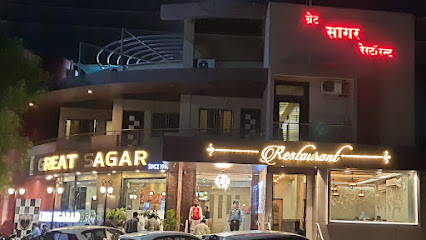
Yalla Yalla
Discover authentic Indian flavors at Yalla Yalla in Aurangabad - where culinary tradition meets vibrant dining.

The Vegan Veg Restaurant
Discover vibrant vegetarian cuisine at The Vegan Veg Restaurant in Aurangabad - where Indian and Chinese flavors unite in a plant-based paradise.
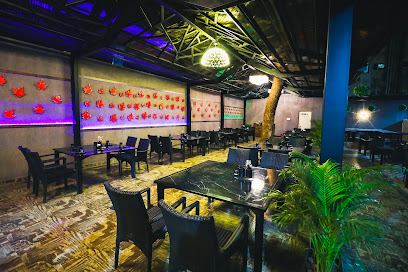
Bhoj Thali Restaurant
Experience the essence of Gujarati and Rajasthani cuisine at Bhoj Thali Restaurant in Aurangabad – where every meal tells a story.

Amigos Kitchen
Discover the vibrant flavors of India at Amigos Kitchen, where traditional cuisine meets fast food convenience in Aurangabad.

Naivedya Veg Thali Restaurant
Discover the essence of Indian vegetarian cuisine at Naivedya Veg Thali Restaurant in Aurangabad - where every thali tells a story.

Sagar Restaurant
Experience authentic Indian and Mughlai cuisine at Sagar Restaurant in Aurangabad – where tradition meets flavor.

Smile Veg Restaurant
Experience authentic South Indian vegetarian cuisine at Smile Veg Restaurant in Aurangabad – where flavor meets tradition.

Swad Restaurant
Savor authentic Gujarati cuisine at Swad Restaurant in Aurangabad - a haven for vegetarian food lovers.

Barbeque Nation - Aurangabad - Prozone Mall
Experience the ultimate barbecue feast at Barbeque Nation in Aurangabad's Prozone Mall with an array of delicious dishes that delight every palate.

TeAmo Restaurant
Experience the best of Asian and Continental cuisine at TeAmo Restaurant in Aurangabad - where fine dining meets vegetarian delights.

Markets, malls and hidden boutiques
Fashion Factory
Discover the latest fashion trends at Fashion Factory, your go-to clothing store in Aurangabad for stylish apparel and accessories.

Shopper's Stop
Discover fashion and style at Shopper's Stop, Aurangabad's premier department store offering a diverse selection for the whole family.

Magicalprints & gifts
Explore the charm of Aurangabad with unique gifts and personalized creations at Magicalprints & Gifts, a must-visit for every tourist.

RANGOLI COLLECTION EXCLUSIVE. रंगोली कलेक्शन एक्सक्लसिव्ह
Explore a diverse range of clothing and accessories at Rangoli Collection Exclusive in Aurangabad, where tradition meets modernity for every fashion enthusiast.

Firstcry.com Store Aurangabad Jalna Road
Explore a world of baby products at Firstcry.com Store in Aurangabad, where quality meets variety for every parent's needs.

Raj Cloth Stores Exclusive
Discover unique fashion and quality textiles at Raj Cloth Stores Exclusive in Aurangabad, where traditional meets contemporary style.
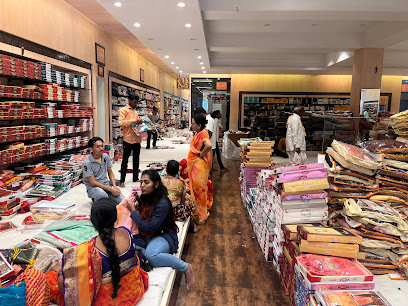
Paithani Silk Weaving Center
Explore the vibrant artistry of Paithani silk weaving in Aurangabad, a cultural treasure showcasing exquisite sarees and traditional craftsmanship.

Mahendra Dresses
Explore Mahendra Dresses in Aurangabad for a unique shopping experience featuring traditional and contemporary Indian fashion.
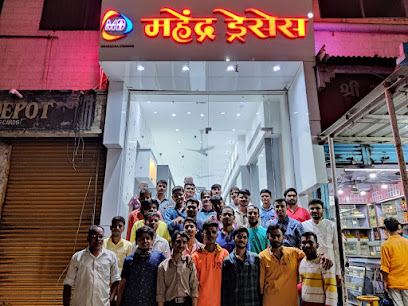
Himroo Fabrics
Discover the art of handwoven textiles at Himroo Fabrics in Aurangabad, a heritage store celebrating India's rich fabric traditions.

CHITLANGI Gift & Toys
Explore CHITLANGI Gift & Toys, Aurangabad's unique gift shop offering a delightful array of toys, novelties, and more for all ages.

S.S.D. GIFT COLLECTION
Discover unique souvenirs and local treasures at S.S.D. Gift Collection in Aurangabad's vibrant Gomtesh Market.

House of Crafts by Krishnapriya (ONLINE BUSINESS)
Explore the House of Crafts by Krishnapriya in Aurangabad for unique handmade gifts and treasures celebrating local artisanship.

Gopika sarees dresses ghagra odhni wedding collection Silk sarees paithani
Explore Gopika Sarees in Aurangabad for exquisite silk sarees, ghagras, and wedding attire that blend tradition with contemporary style.

RESHAM KIDS (New_Born_Baby Show_Room, One-Stop-Shop)
Explore Resham Kids in Aurangabad for a delightful selection of baby clothing, toys, and essentials, perfect for parents and little ones alike.

Akshay's Gift Gallery
Explore Akshay's Gift Gallery in Aurangabad for unique gifts, decor, and toys that embody the local culture and artistry, perfect for every occasion.
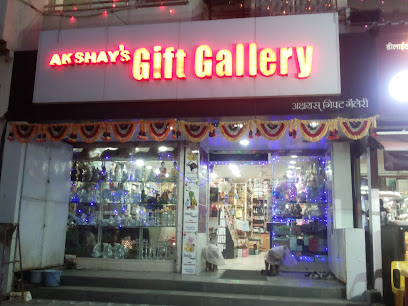
Essential bars & hidden hideouts
Tandoor Restaurant & Bar
Experience authentic Indian flavors at Tandoor Restaurant & Bar in Aurangabad, famous for its delicious tandoori dishes and vibrant atmosphere.

Shail
Experience the blend of sports, culture, and culinary delights at Shail, Aurangabad's premier sports bar and restaurant.
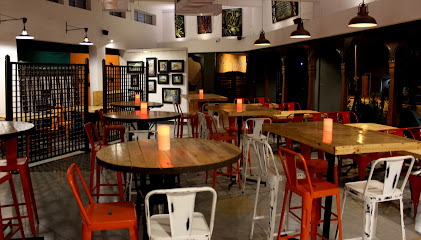
Vishal's Floating Spirit Bar & Restaurant
Discover the exquisite flavors and lively ambiance of Vishal's Floating Spirit Bar & Restaurant in Aurangabad, where dining meets delightful experiences.

Devpriya's Floating Spirit Bar And Restaurant
Discover a culinary haven at Devpriya's Floating Spirit Bar and Restaurant in Aurangabad, offering diverse cuisines and a vibrant bar experience.

Varad Restaurant& Beer Bar
Discover the vibrant flavors of Aurangabad at Varad Restaurant & Beer Bar—where culinary delights and a lively atmosphere await.

The Lotus Restaurant & Bar
Discover the exquisite flavors and vibrant atmosphere at The Lotus Restaurant & Bar, a must-visit dining destination in Aurangabad.

Hotel Mayuri
Discover Aurangabad's vibrant nightlife at Hotel Mayuri, where delicious cuisine meets a lively bar atmosphere for an unforgettable experience.

Swara Executive Restro & Bar
Experience vibrant nightlife and delectable cuisine at Swara Executive Restro & Bar in Aurangabad, where every visit is a celebration of flavor.

Hotel Saylee Bar & Restaurant
Discover the vibrant flavors and lively atmosphere at Hotel Saylee Bar & Restaurant, a culinary gem in Aurangabad, Maharashtra.

NEW WINE BAR & RESTAURANT
Experience Aurangabad's nightlife at New Wine Bar & Restaurant, where exquisite drinks meet delightful dining in a vibrant atmosphere.

Hotel Tarang Lounge Bar
Experience the lively spirit of Aurangabad at Hotel Tarang Lounge Bar, where great drinks and an inviting atmosphere await every visitor.

Hotel Arpan Bar And Restaurant
Experience delightful seafood and vibrant drinks at Hotel Arpan Bar And Restaurant in Aurangabad, a perfect culinary destination for tourists.

Ruby Restaurent
Discover Ruby Restaurant in Aurangabad, where vibrant ambiance meets delicious cuisine for an unforgettable dining experience.

Player sports Bar
Discover the perfect spot for sports, drinks, and good times at Player Sports Bar in Aurangabad, a must-visit for every tourist.

Priya Bar & Restaurant
Discover Aurangabad's vibrant dining scene at Priya Bar & Restaurant, where delicious cuisine meets live music for an unforgettable night out.

Local Phrases
-
- Helloनमस्कार
[namaskar] - Goodbyeअलविदा
[alvida] - Yesहाँ
[haan] - Noनहीं
[nahin] - Please/You're welcomeकृपया
[krupaya] - Thank youधन्यवाद
[dhanyavad] - Excuse me/Sorryक्षमा कीजिए
[kshama keejiye] - How are you?आप कैसे हैं?
[aap kaise hain?] - Fine. And you?ठीक हूँ। आप?
[theek hoon. aap?] - Do you speak English?क्या आप अंग्रेज़ी बोलते हैं?
[kya aap angrezi bolte hain?] - I don't understandमुझे समझ में नहीं आया
[mujhe samajh mein nahin aaya]
- Helloनमस्कार
-
- I'd like to see the menu, pleaseकृपया मेनू दिखाइए
[krupaya menu dikhaiye] - I don't eat meatमैं मांस नहीं खाता
[main maans nahin khata] - Cheers!चियर्स!
[cheers!] - I would like to pay, pleaseकृपया मैं भुगतान करना चाहूँ
[krupaya main bhugtan karna chaahoon]
- I'd like to see the menu, pleaseकृपया मेनू दिखाइए
-
- Help!मदद!
[madad!] - Go away!चले जाओ!
[chale jao!] - Call the Police!पुलिस को बुलाओ!
[police ko bulaao!] - Call a doctor!डॉक्टर को बुलाओ!
[doctor ko bulaao!] - I'm lostमैं खो गया हूँ
[main kho gaya hoon] - I'm illमैं बीमार हूँ
[main bimaar hoon]
- Help!मदद!
-
- I'd like to buy...मैं खरीदना चाहूँगा...
[main khareedna chaahunga...] - I'm just lookingमैं बस देख रहा हूँ
[main bas dekh raha hoon] - How much is it?यह कितने का है?
[yah kitne ka hai?] - That's too expensiveयह बहुत महंगा है
[yah bahut mahnga hai] - Can you lower the price?क्या आप कीमत कम कर सकते हैं?
[kya aap keemat kam kar sakte hain?]
- I'd like to buy...मैं खरीदना चाहूँगा...
-
- What time is it?अब कितने बजे हैं?
[ab kitne baje hain?] - It's one o'clockएक बजे हैं
[ek baje hain] - Half past (10)दस बजे तक
[das baje tak] - Morningसुबह
[subah] - Afternoonदोपहर
[dopahar] - Eveningशाम
[shaam] - Yesterdayकल
[kal] - Todayआज
[aaj] - Tomorrowकल
[kal] - 1एक
[ek] - 2दो
[do] - 3तीन
[teen] - 4चार
[chaar] - 5पांच
[paanch] - 6छह
[chhah] - 7सात
[saat] - 8आठ
[aath] - 9नौ
[nau] - 10दस
[das]
- What time is it?अब कितने बजे हैं?
-
- Where's a/the...?...कहाँ है?
[...kahan hai?] - What's the address?पता क्या है?
[pata kya hai?] - Can you show me (on the map)?क्या आप मुझे दिखा सकते हैं (नक्शे पर)?
[kya aap mujhe dikha sakte hain (naksha par)?] - When's the next (bus)?अगली (बस) कब है?
[agli (bas) kab hai?] - A ticket (to ....)एक टिकट (.... के लिए)
[ek ticket (... ke liye)]
- Where's a/the...?...कहाँ है?
History of Aurangabad
-
Aurangabad, originally known as Khadki, was founded in 1610 by Malik Ambar, the Prime Minister of the Ahmadnagar Sultanate. It was later renamed Fatehnagar by his son, Fateh Khan, and finally Aurangabad by the Mughal Emperor Aurangzeb in 1653, when he made it his capital during his Deccan campaign.
-
Aurangzeb, the sixth Mughal Emperor, is a significant figure in the history of Aurangabad. The city served as his capital during his reign in the Deccan region from 1653 to 1707. During this period, Aurangzeb commissioned several structures, including the Bibi Ka Maqbara, which is often referred to as the 'Taj of the Deccan' due to its resemblance to the Taj Mahal.
-
Bibi Ka Maqbara, built between 1651 and 1661, is a mausoleum dedicated to Dilras Banu Begum, Aurangzeb's first wife. This architectural marvel was designed by Ata-ullah, the son of Ustad Ahmad Lahauri, the principal designer of the Taj Mahal. It stands as a testament to Mughal architecture in the Deccan region.
-
Aurangabad came under the control of the Marathas in the early 18th century after the decline of the Mughal Empire. The city was part of the Nizam's dominions, which later became the princely state of Hyderabad. The Maratha period saw the construction of several forts and temples in and around Aurangabad.
-
During the British colonial period, Aurangabad was part of the Hyderabad State under the Nizam's rule. The city modernized with the introduction of railways and other infrastructure developments. The Nizam's loyal association with the British Empire ensured that Aurangabad remained a significant administrative and cultural hub.
-
After India's independence in 1947, Aurangabad became part of the Indian state of Maharashtra. The city has since developed into an industrial and educational center, known for its textile industry and educational institutions like Dr. Babasaheb Ambedkar Marathwada University.
-
Aurangabad is renowned for its proximity to the Ellora and Ajanta caves, UNESCO World Heritage Sites. The Ellora Caves, dating from 600 to 1000 AD, feature rock-cut monasteries and temples representing Hindu, Buddhist, and Jain traditions. The Ajanta Caves, older and dating from the 2nd century BCE to 480 CE, are famous for their stunning murals and sculptures that depict the life of the Buddha.
-
Aurangabad is a melting pot of cultures, influenced by various dynasties and rulers. The city celebrates a variety of festivals, including the vibrant Ellora-Ajanta Festival, which showcases classical Indian dance and music. The local cuisine, including the famous Naan Qalia, reflects the rich culinary traditions inherited from the Mughal and Nizam eras.
Aurangabad Essentials
-
Aurangabad is well-connected by air, rail, and road. The nearest airport is the Aurangabad Airport (Chikkalthana Airport), with regular flights from major Indian cities like Mumbai, Delhi, and Hyderabad. The city is also served by Aurangabad Railway Station, which connects to major cities such as Mumbai, Pune, and Hyderabad. By road, Aurangabad is accessible via National Highway 52 and State Highways, with regular bus services from neighboring cities.
-
Within Aurangabad, several transportation options are available. Auto-rickshaws and taxis can be hired for short distances or day trips. The Maharashtra State Road Transport Corporation (MSRTC) operates buses within the city and to nearby tourist spots. For a more personalized experience, consider renting a car. Ride-sharing apps like Ola and Uber are also operational in Aurangabad.
-
The official currency in Aurangabad is the Indian Rupee (INR). Credit and debit cards are widely accepted in hotels, restaurants, and larger shops. However, it's advisable to carry some cash for smaller establishments and local markets. ATMs are plentiful throughout the city, but it's a good idea to withdraw sufficient cash in urban areas before heading to more remote sites.
-
Aurangabad is generally a safe city for tourists, but it's wise to take standard precautions. Avoid isolated areas at night and be cautious with your belongings in crowded places like markets and bus stations. Certain neighborhoods, particularly near railway stations and bus terminals, may have higher petty crime rates targeting tourists. Always use registered transportation services and avoid accepting unsolicited help from strangers.
-
In case of an emergency, dial 112 for immediate assistance. The local police station and several hospitals, including the Government Medical College and Hospital, provide emergency services. It's highly recommended to have travel insurance that covers medical emergencies. Pharmacies are widely available for minor health issues, and many offer 24-hour service.
-
Fashion: Do dress modestly, especially when visiting religious sites. Avoid wearing revealing clothing. Religion: Do respect local religious practices. Remove your shoes before entering temples and cover your head if required. Public Transport: Do be respectful and give up your seat to elderly passengers. Don’t eat or drink on public transport. Greetings: Do greet people with a 'Namaste' or a handshake. Avoid overly familiar gestures. Eating & Drinking: Do try local delicacies and accept food offerings graciously. Don’t refuse hospitality, as it is considered impolite.
-
To experience Aurangabad like a local, visit the vibrant local markets such as Gul Mandi and Aurangpura for fresh produce and traditional goods. Engage with locals; they are friendly and often eager to share stories about the city's rich history. Don't miss visiting the UNESCO World Heritage Sites like the Ajanta and Ellora Caves. For a unique experience, try the local street food and take a walk along the Siddharth Garden and Zoo for a leisurely day out.
Trending Landmark in Aurangabad
-
BIBI KA MAQBARA
-
Daulatabad Fort
-
Siddharth Garden and Zoo
-
Cannought Garden
-
Himayatbagh Biodiversity Heritage site
-
Aurangabad Caves Aurangabad
-
Delhi Gate
-
Makai Gate
-
Goga Baba Hill
-
Soneri Mahal
-
Panchakki
-
Chhatrapati Shivaji Maharaj Museum, Sambhajinagar
-
Punyashlok Ahilyabai Holkar Square Aurangabad
-
Chand Minar
-
Jafar Gate
Nearby Cities to Aurangabad
-
Things To Do in Nashik
-
Things To Do in Pune
-
Things To Do in Mumbai
-
Things To Do in Vadodara
-
Things To Do in Nagpur
-
Things To Do in Bhopal
-
Things To Do in Ahmedabad
-
Things To Do in Panaji
-
Things To Do in Goa
-
Things To Do in Rajkot
-
Things To Do in Udaipur
-
Things To Do in Jabalpur
-
Things To Do in Raipur
-
Things To Do in Ranthambore
-
Things To Do in Pushkar


















